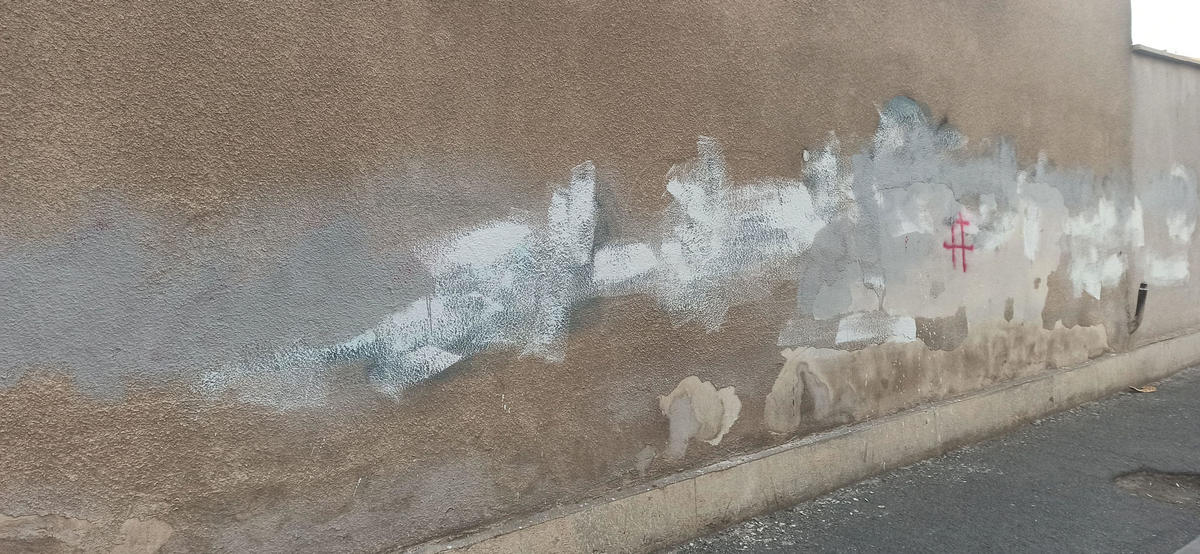
Editors’ Note
The images come through the phone. Together, they form a fractured mosaic. Some are pixelated, still others pyrotechnic, theatrical: young bodies, striding, defiant; packs of women, their long locks exposed; fallen bodies in distress; headscarves in flames; preteens giving the ancient ayatollahs the finger.
It has been 117 days since a young woman named Jina Mahsa Amini was beaten to death by members of the Islamic Republic of Iran’s morality police for the crime of exposing too much hair. Amini’s death, along with the image of her tube-riddled body in a Tehran hospital bed, has inspired a remarkable anti-regime movement that shows no sign of abating. A movement that is at the vanguard of what has been called a feminist revolution, given the central role that women have played — their bodies, their voices, their astonishing courage.
Like many, we watch these events obsessively — tweeting, Instagramming, perhaps marching, daring to hope that international solidarity will make a difference but also painfully aware of our distance, the ambiguous levers of cause and effect. Billboards, op-eds, T-shirts — these are the consolations of the exile. What impact our efforts may have is impossible to gauge.
We long to know how it feels on the inside, amid a country in revolt; we hunger for more than images. When we found one young protester willing to share a journal of her days and nights with us, we leapt at the chance. What follows is not tendered as representative. It is one woman’s experience — one experience among legions. We plan to publish additional entries from time to time, an ongoing contribution to a composite portrait of this extraordinary moment.
In solidarity, Bidoun
Day 71
It’s not entirely clear to me when it all began. It was probably that day in September when I’d scrolled through Twitter and read about a clash between a young woman and the morality police. My eyes lingered over one journalist’s comment: “This is terrifying if true.” Or maybe it was on Hijab and Chastity Day, July 12,1 which is to say a couple of months earlier, when some of us had dared one another to go out onto the streets without headscarves.
I had borrowed my father’s Peugeot, and not long after I’d gotten on the highway, he called to say he’d received a text message notifying him of “improper hijab” in the vehicle. He didn’t seem worried, maybe because he knew that it takes two warnings before your car gets confiscated by the police.
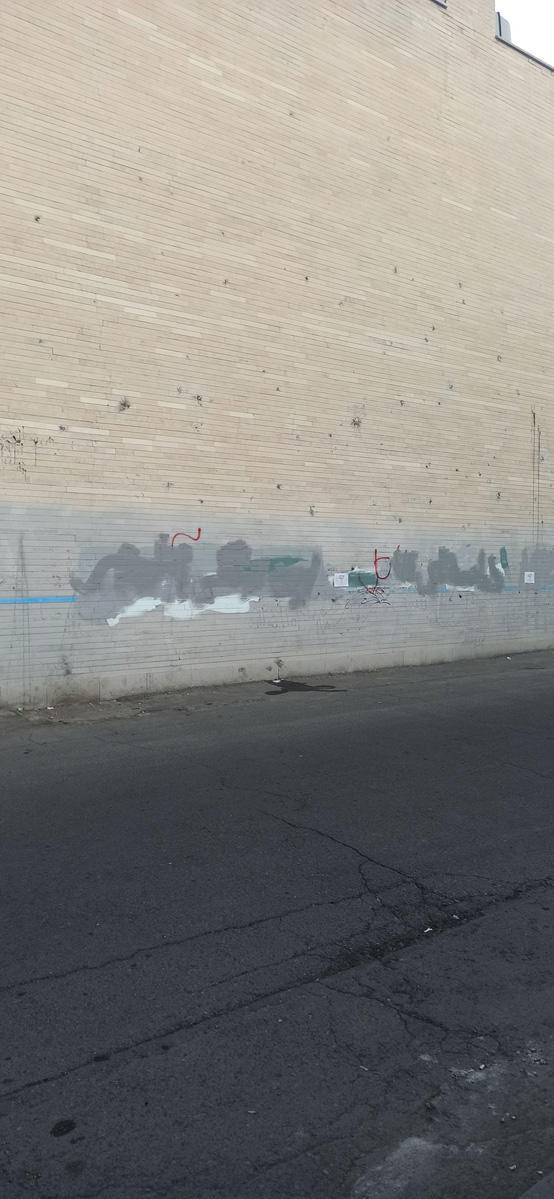
Many of us had been wearing our headscarves around our necks, like shawls, for a while now. We wanted to know why the price of mandatory hijab was only for women to pay. We were annoyed by those cafés that insisted we wear them. The refrain was familiar: “I don’t believe in the hijab either, but if you don’t do it, they’ll shut us down.” We boycotted those places.
On Ferdos street, I spotted a girl wearing a white T-shirt and pants. She had no headscarf on at all. I’m 38 years old. I was born after the 1979 revolution and have lived in this country all my life. I had never seen such a thing on a city street.
It was on that very same Hijab and Chastity Day that a video taken on a bus circulated like wildfire. The woman filming was evidently not wearing a hijab, while another woman in a chador2 was howling at her: “I’ll film you and hand it over to the Revolutionary Guards!” Apparently, she had bitten the unveiled woman’s arm. Other women rallied together and threw the woman who had been making the threats off the bus. The video went viral, and we were happy to see women both with and without the hijab coming together to oppose this nasty pro-regime woman.
But our happiness was short-lived. The hijabless girl was arrested and wasn’t heard from for a long time. We soon learned that her name was Sepideh Rashnu. She was a regular girl like us who’d been wearing her headscarf around her neck. When we next heard from Sepideh, she was on television, her face clearly beaten. “I made a mistake,” she said in what was obviously a coerced confession. Anger piled atop anger.
Not much later, another video emerged of a woman running after a morality-police van, yelling, “Don’t take my daughter! My daughter is sick!” The men and women assembled nearby just stood there watching. The driver of the van pushed the mother aside and drove off. Anger piled atop anger atop anger.
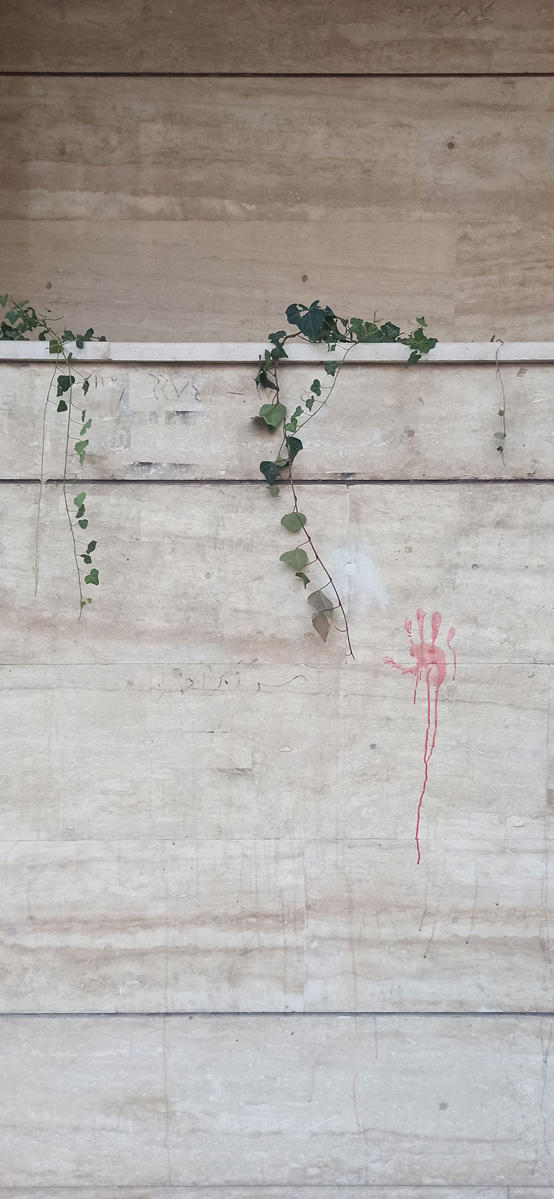
On Thursday, September 15, I had a guest at home. A young relative was visiting from the US and announced that he was coming to see me. Amidst his incessant talking, I checked the news. The girl they were saying had been beaten in a morality-police van was now in a coma at Kasra Hospital. I was trying to explain my feelings to this young relative who’d grown up in the US. I felt he knew nothing of Iran’s political conditions. How could he? He hadn’t lived here, hadn’t lived under the terror of a dictatorship that haunts every piece of one’s personal life. He came from a religious part of the family that, for years, had forced me to wear a stricter hijab than was enforced by the state. I kept repeating, “You see? You see?” He replied, “Just fix your headscarf, wear a chador, show some respect.” I argued back, and he accused me of being a shrew. He said he understood, but did he really?
The news grew more and more ghastly. It turned out that the girl at Kasra Hospital was a Kurdish girl who had been visiting Tehran. Photos of her taken before the arrest emerged, and we remarked that she had been dressed much more modestly than most girls in Tehran. Apparently, before she’d been arrested, she had screamed, “Don’t take me away. I’m a stranger in this city!” Photos emerged of her parents outside the hospital room, holding each other, and then of herself without a headscarf, her ear drenched in blood. She was lying in bed, hooked up to a machine.
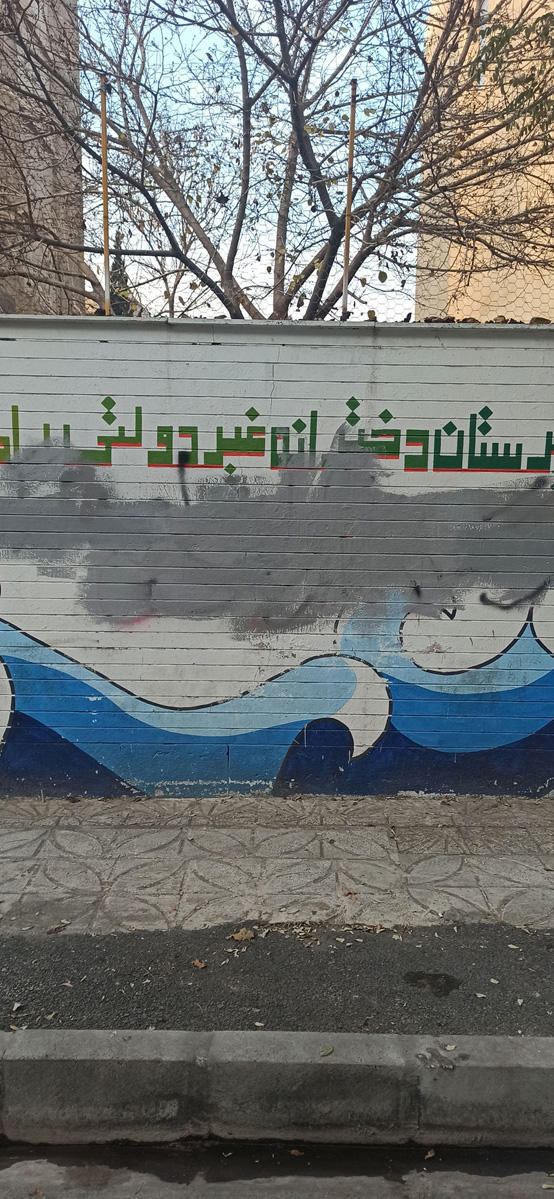
On Friday, when they announced that Jina had died — that was her name — some people said they’d go to the hospital to protest. Overnight, probably because they had picked up on people’s anger, the government moved her to Saqqez, her hometown in Iranian Kurdistan, to be buried. On Saturday morning, looking at Telegram and seeing the Kurdish women and men who had gathered for Jina, chanting, “Jin, jiyan, azadi” [“Woman, life, freedom” in Kurdish] and “Killing over a headscarf? How long will these atrocities go on?” made my jaw drop. The Kurdish people had astounded me two weeks prior, when there had been a large gathering in the town of Marivan at the funeral of a woman who had committed suicide in order to escape her rapist. People had chanted, “From Kurdistan to Tehran, stop violence against women.” I had no idea at the time that the Kurds would be teaching us lessons about fighting and resistance for some time to come. The women gathered around Jina’s grave, took off their headscarves, and twirled them in the air. In that moment, our history changed, and our lives as well.
I have no recollection of Sunday besides perusing these scenes on social media and excitedly talking to my mother and cousin about them. In the evening, I saw a poster on Instagram, a call by a group of women’s rights activists who said that they’d be gathering that Monday on Hijab Street to protest Jina’s death. I had an appointment at a hair salon at 6pm that day. For the past few years, I’ve been going to a men’s salon to have my hair cut short like a man’s: one more way to protest the Islamic Republic’s laws of gender segregation. I told my brother who’d booked the appointment to cancel it so we could go to the demonstration instead. He said it was too late to cancel and that, anyway, nobody had seen the poster and no one would show up. Those who did, he added, would probably chant monarchist mantras like “Reza Shah, bless your soul.” He couldn’t see even a glimmer of hope in the darkness and decay.
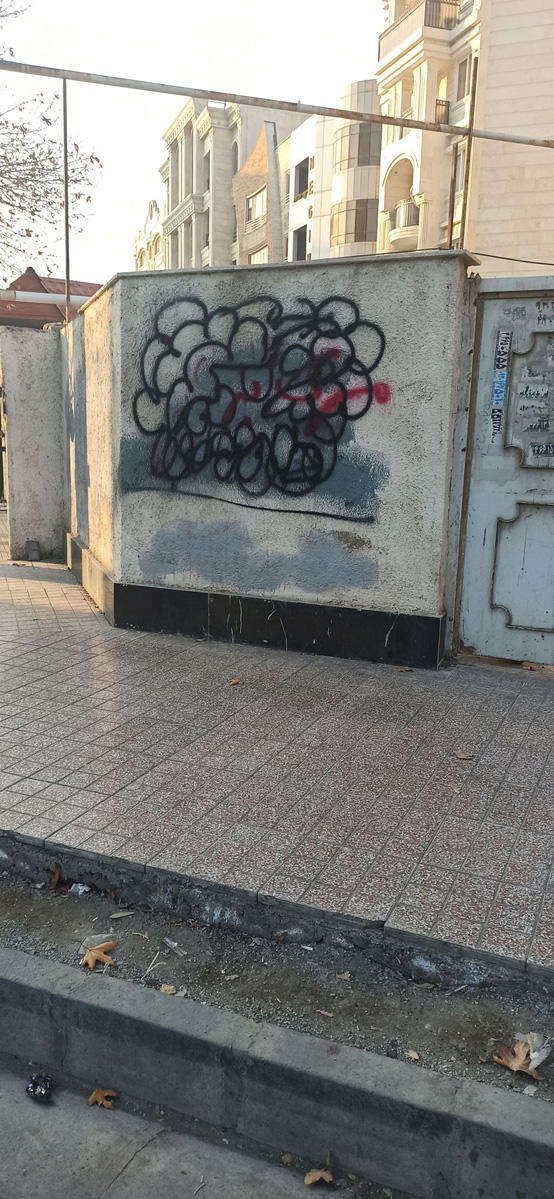
The first video that came out while I was in the hair salon was of a boy shouting alone, “Reza Shah, bless your soul.” I immediately felt at peace about not having gone. I hadn’t wanted to participate in a gathering where such reactionary slogans would be chanted. But subsequent videos and photos showed how wrong I had been: images of girls burning their headscarves, a girl standing and shouting in front of an armored water-cannon vehicle, another girl yelling “Sir, come and join!” at a man on the sidewalk, and the man joining the crowd of demonstrators with surprising obedience.
There we were, myself, my brother, and my cousin, sitting in a tacky luxury building in north Tehran, constantly refreshing Twitter and Telegram (God bless “Vahid Online,” the one-man Telegram news channel), hungry for videos, hungry for news. The hairdresser and his assistant seemed unfazed. I turned to my brother accusingly: It was his fault that we hadn’t gone. Why did he always have to be so pessimistic? The assistant, overhearing me, warned us, “Never go to these events. They’re dangerous.” I told him that someone had to go if we wanted change. “But things never change in Iran,” he replied. It was a statement I would hear over and over again.
Later that night, a friend was streaming live on Instagram from Vali Asr Square in central Tehran. I knew from past protest experiences that once night falls, things can get extra violent, as though police officers were werewolves whose wild faces glistened in the moonlight. The live broadcast was terrifying: The person filming could hardly breathe through the tear gas. Every once in a while, they’d suddenly stop recording and start running. These were not unfamiliar images. I had experienced similar scenes in previous years: the guards, the plainclothes officers, the tear gas, the paintballs.

When I got home that evening, a coworker of M’s called to ask if I’d heard from him; he wasn’t answering his phone. I tried calling several times as well, but no one picked up. I also messaged him on WhatsApp, but again there was no reply, even though I could tell that he’d seen my message. In the morning, I called M’s cousin. He had no news either. I’d begun driving toward his house when M’s mother called to say they’d arrested him last night and released him this morning. He’d been out filming the protest. At the station, he’d been beaten nonstop from 7pm to 12am. When they discovered he had a reputable job, they released him, but without money, his house keys, or his phone. I went to see him — he was limping, sleep deprived, his eyes black and blue. Humiliated. I thought to myself, This is it. That was this year’s protest. We’ve seen it before. In 2009. In 2019, too, when they shut down the internet and killed 1,500 people. Remember that?
But this time, the protests didn’t go away. The next day, the University of Tehran was riotous. I believe that was the first time I saw the slogan “Zan, zendegi, azadi” [“Woman, life, freedom” in Farsi] in Tehran. Soon, these words were everywhere. Little girls refused to wear their headscarves, citing “Woman, life, freedom.” Freethinkers in conservative families declined the headscarf: “Woman, life, freedom.” At a friend’s house, his religious mother jokingly told her traditional husband to do such-and-such chore himself because “Woman, life, freedom.” Even my own mother wielded these words before my father, who doesn’t have much of a patriarchal attitude: “From now on, it’s ‘Woman, life, freedom.’” Anthems and songs, one after the other, were released with the words woman, life, freedom.
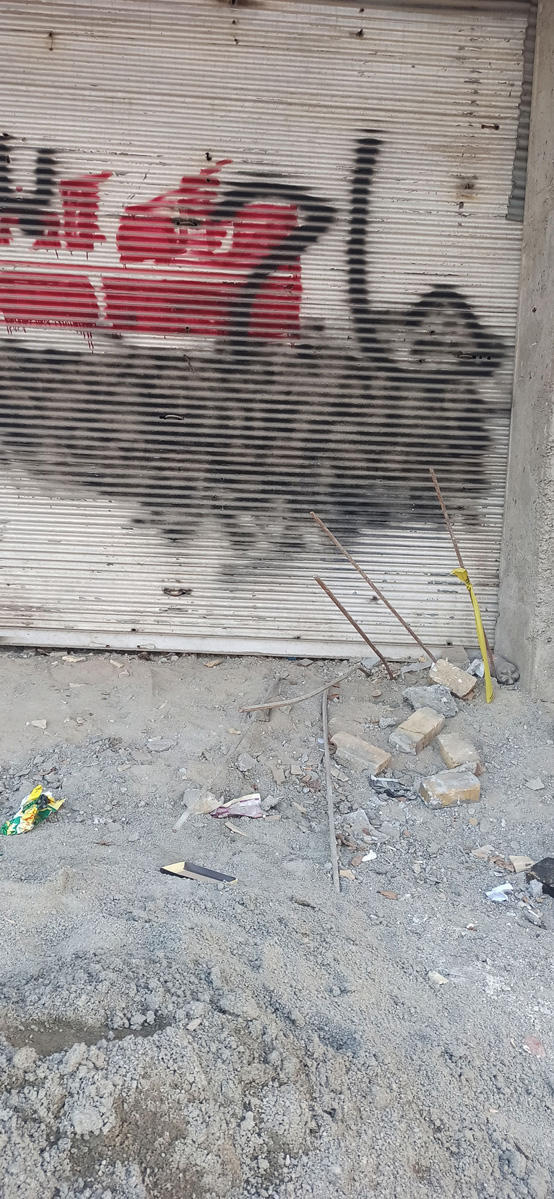
When the demonstrations showed no signs of abating, friends living abroad called to say, “You’re so lucky you’re in Iran.” As if they were missing out on the biggest event of our lives. I told them that my situation hadn’t changed much. I work from home. I’m following the news the same way you do. But what I didn’t tell them was that merely taking a breath of air in a revolutionary moment is priceless, that I was sorry they couldn’t experience that.
That first month, I couldn’t tear myself away from the phone, constantly scrolling through social media. On Twitter, a barrier had been broken, and we made lists of reasons we were protesting. These tweets always started with the word “For,” or baraye: for the coronavirus vaccines that were never imported, for corruption, for ineptitude, for the people they shot in the 2019 protests whose names have been lost to history. The same words were made into an anthem for the protests, a song I didn’t like much but that seemed to speak to many.
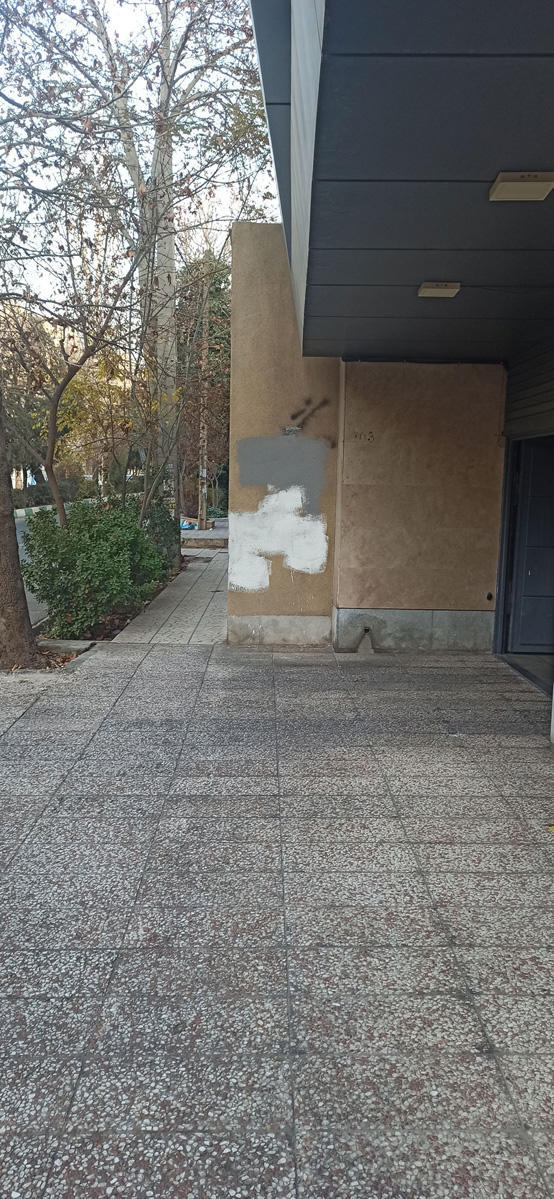
From the beginning, the demonstrations were neighborhood-based. In my own neighborhood in west Tehran, there were nighttime chants, a bit like during the 2009 protests. They began every night at 9 pm. This time, instead of “Allah o Akbar” and “Ya Hossein,” along with other religious slogans, there was only “Death to the dictator,” “Woman, life, freedom,” and “Down with the child-killing regime.” I went out to yell too.
I was in heaven. In my wildest dreams, I couldn’t have imagined a women’s movement starting from within the heart of the Middle East. I couldn’t have imagined Kurds, Turks, Fars, and Baluch people coming together in this way, uniting. I slowly got used to the nightly sound of gunshots and explosions coming from the neighborhood adjacent, one of the epicenters of the protests. The question we posed to ourselves each morning was What should we do today? In past demonstrations, I was never the type to run out and stand toe to toe with the Revolutionary Guards. What was I to do now that I smoked a pack of cigarettes a day and no longer had the lungs to run? We would gather as friends and talk about our fears but also our boundless happiness. First, we called it a single protest, then it was a movement, and then we got used to calling it a revolution. Not that it is or isn’t a revolution, which I’m still unsure about, but what’s certain is that a revolutionary imagination has taken hold.
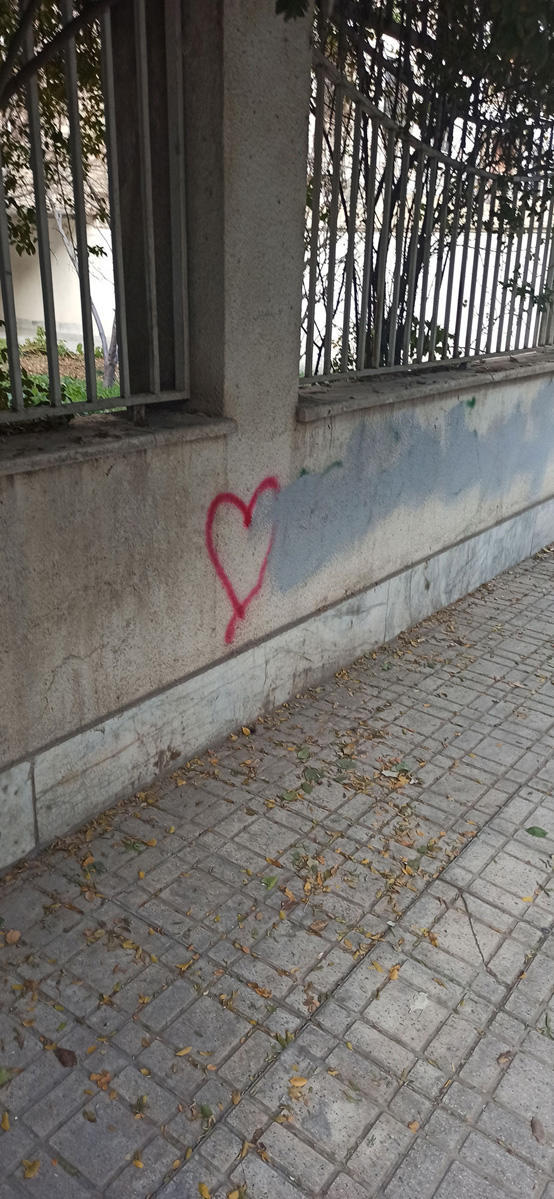
Several months ago, before the outbreak of these protests, a political prisoner named Keyvan Samimi offered these words: “From wherever anyone is standing, take one step forward.” I didn’t make much of it then, but now I understand what he meant. I feel it in my bones. We’ve all decided to take that one step. S wrote revolutionary slogans on little pieces of paper by hand; she argued that they had to be handwritten to be effective. She stuck them to the doors of cars and houses. She wrote slogans on walls, too. B designed banners on fabrics and hung them from pedestrian bridges over highways. We decided that if we’d been wearing our headscarves up until now, we would only wear them around our necks, and that if we’d been wearing them around our necks, we would now take them off completely. One step forward.
For the time being, there’s no sign of the morality police, but if anyone were to say that the mandatory hijab has been abolished, that would be nonsense. In the beginning, passing hijabless by the armed guards who’ve long had a presence in the city frightened us, but soon we were doing it with boldness. We slowly realized that they wouldn’t initiate a confrontation over hijabs, and yet the fear didn’t subside entirely. Fear of “fire at will”3 fanatics, who work independently and without official orders, had permeated our lives. So many of us still remember the fear our mothers felt for surreptitiously wearing nail polish back in the day. Or another memory: looking out a car window as a child in the 1980s and seeing a member of the notorious “Komiteh”4 stop a bride and groom, ordering the latter to remove her makeup with a tissue. I remember her tears as she wiped her face. And I remember 2014, when some men in Isfahan threw acid on the faces of supposed “bad-hijab girls,” as they call those of us who don’t cover all of our hair. There had been four girls. One of them died. Their attackers have never been identified.
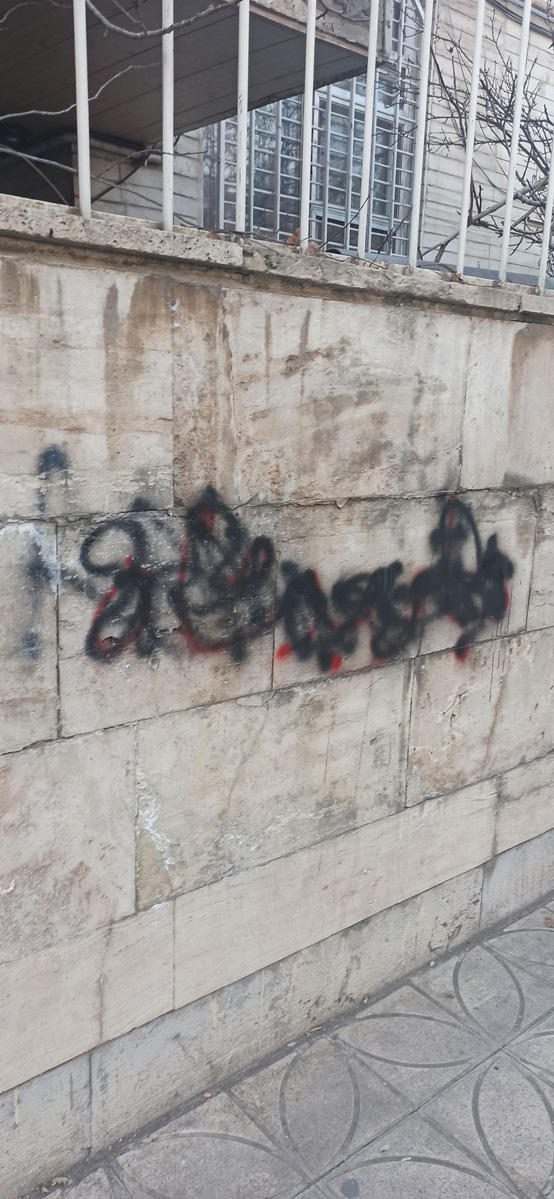
With fear, we tried to take one step forward, just one step. But the beauty of this fear is in the way that each step is greeted with praise, especially by members of the older generation: “Good for you youngsters. Don’t make the same mistakes we made.” It’s true that we often talk about how we shouldn’t repeat their mistakes. I ask my mother, “How come you went to the anti-shah protests, but not to the anti–mandatory hijab protests on March 8, 1979?5 Why didn’t you think it was important that they were dictating what you could wear?” She replied, “I don’t know why it wasn’t important for us. Maybe we never believed it would actually go so far.”
All around the city, we get in fights about various things, like leadership — as in, who can lead us? We fight when someone says something that sounds conservative or anti-revolutionary. We fight with people whose mind-sets are stuck in patriarchal structures, who say, “This isn’t a women’s revolution — why are you making everything about gender?”
On the fortieth day after Jina’s death, I saw images from Saqqez of masses of people traveling toward the cemetery where she had been buried. That day, I went out with my cousin S. The problem with demonstrations in Tehran is that the city is vast so people wander aimlessly through its streets, not knowing where to go to join a crowd. And so there we were, sniffing for the telltale smell of tear gas to guide us. Sometimes we’d pass areas where burning trash cans indicated that something had happened. We spent a lot of time in the traffic of drifting people, playing Mehdi Yarrahi’s “Women’s Anthem” loudly and shouting along to the lyrics? “Hair tied atop the head, conjuring awe / They’ve killed anyone who chronicles a crime …”
Finally, we spotted a gathering at Seyyed Khandan. We parked the car, hid our phones under the seats,6 and tried to join the crowd. The street was full of women and girls walking up and down, obviously looking for an opportunity to gather and chant. Suddenly, guards on motorcycles began to attack the assembled, shooting tear gas at us. Some people broke into a sprint to get away. We stayed cool, trying to act as though we were just passing through. They beamed a laser onto S, which is an indication that they’ve got their eyes on you and are ready to shoot. I took S’s hand and we made our way through alleys. Somehow, we managed to laugh through it all. We had to piss badly and observed that the problem with demonstrations in this city was the shortage of public bathrooms; with the first whack of a baton, your bladder could spill! Shariati Street was full of women who, like us, were walking without hijabs and waiting for another opportunity to gather. We climbed back into the car and got stuck in traffic again. S had brought some halva along and was offering it to people to let them know that it had been forty days7 since Jina’s death, in case they didn’t know already.
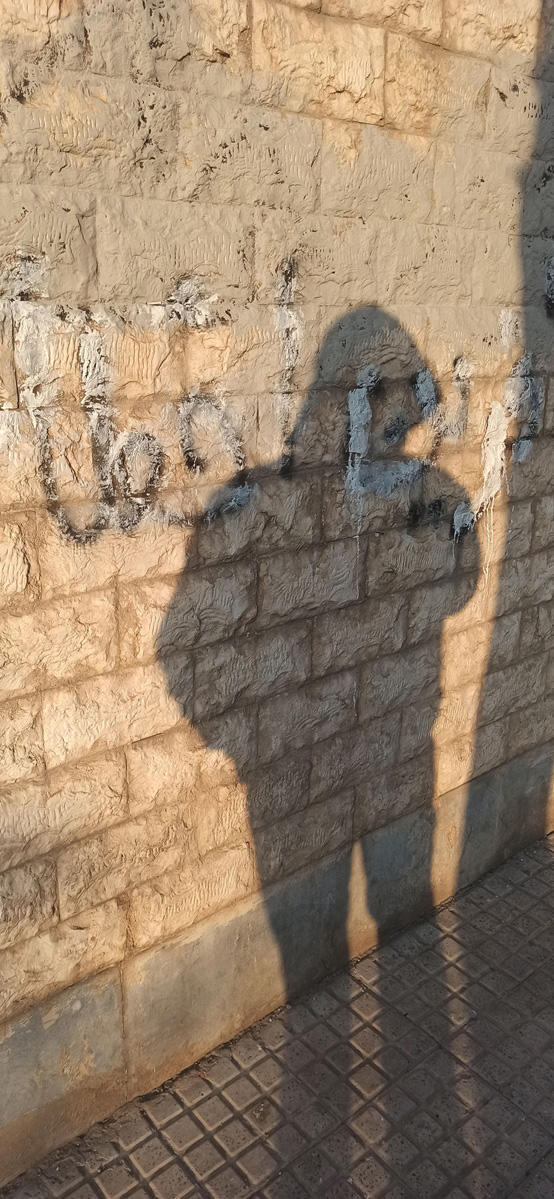
The following week, I had to go to the police station with M to report a theft. When we entered the station, we passed through a yard and then entered a sitting room with cubicles on one side and the police chief’s room at the end. M suddenly dropped his head; I noticed that his eyes seemed to be popping out of their sockets. He whispered, “These are the same guys who beat me up.” He gestured toward a short man walking by, paunchy in plainclothes. He was a major. He didn’t look like a torturer. “That first day, he beat me for hours,” M said.
We stood awkwardly in the middle of the station, surrounded by officers who had either taken part in or witnessed his beating. I spoke to the Major because M couldn’t bear to, covering his face in a mask as if he were worried about COVID. I had to speak calmly and gently to someone whom I knew had beaten my friend for hours. I tried to figure out who he was and finally heard one of his colleagues call him by name. For M, it felt like that day in the movie Death and the Maiden,8 except for the fact that he had no power for retribution.
One day, I know our day will come.
As we left the station, we ran into a young man at the door wearing the uniform of the Revolutionary Guards. “Excuse me,” I said, trying to pass him. He moved aside and said with the most respectful tone imaginable, “Pardon me — please go ahead, ma’am.” I think he saw the bewilderment in my eyes as I thought to myself, How does someone who in this moment seems to be human turn into a monster who beats people with the intent to kill?
We went to a cafe so that M could gather himself. In the courtyard, not a single person was wearing a headscarf. The cafe manager didn’t seem to mind. One step forward.
Translation note: The English version of this text has been adjusted slightly in the editing process and in collaboration with the author.
1. The Islamic Republic named the anniversary of Reza Shah’s attack on Goharshad Mosque in Mashad on July 12, 1935 National Hijab and Chastity Day. They claim people protested that day against the mandatory unveiling of women. In fact, it had been a protest against an imposed dress code for men; mandatory unveiling had not been decreed yet, though there were rumors about it.
2. Chador is the traditional form of Hijab for urban parts of Iran. It usually involves a large black piece of cloth that covers the body from top to toe, only exposing the face. One clutches the chador with one’s hands and it can be quite hard to move around in.
3. In 2017 Khamenei said to Basiji youth: “As is said in military arenas, “fire at will” when you want. Of course, during a war, there is a command center which issues orders, but if the command center cannot contact other bases and centers, the commander issues the "fire at will” order. You are supposed to be officers of the soft war. Whenever you feel that there is something wrong with the central organization and that it cannot work properly, you are free to fire at will. Under such circumstances, you are free to decide, to think, to move, and to act.” So, “fire at will” refers to those who attack of their own will because they believe they have to fight for Islamic ideals and are sanctioned to do so by the leader.
4. The Committee of the Islamic Revolution was the first military entity after the revolution. They had all kinds of powers to stop people, search for people who were pro-shah and anti-revolutionary in one way or another, or simply look for booze, drugs, cassettes or VHS tapes–all of which were forbidden. They could act as morality police or query the relationship between any random man and woman walking together. “Komiteh,” as people used to refer to them, was the most fearsome word of my childhood.
5. On March 8, 1979 women organized the very first protest against the newly established Islamic government. (It was not yet officially the Islamic Republic.) The protests were in reaction to Ayatollah Khomeini’s statement a day earlier that women should not appear “naked” in public. By “naked” he meant without Hijab. So, women were the first group who understood that they stood to lose their civil rights and they protested in massive numbers. Still, political parties and even leftist parties were not supportive of their cause. They believed Hijab wasn’t of vital importance and if women should exercise mandatory Hijab in order to oppose Imperialism and the Shah, so be it.
6. This was something that I later found to be foolish, since if they stop you and you don’t have your phone on you, they immediately assume that you might be a protest leader. Most of us delete photos and social media accounts before leaving the house.
7. Traditionally, Iranian Shiites believe in mourning for the dead on two special days outside of the funeral day: the 7th and 40th days after the funeral are when family and friends gather to console loved ones and mourn. Interestingly, Sunni Muslims of Iran do not practice the 40th day ceremony and Kurds, most of whom are Sunni, only used this Shiite ritual as an excuse to protest.
8. A 1994 film directed by Roman Polanski based on the 1990 play of the same name directed by Ariel Dorfman. The story is set in an unnamed South American country which appears to be a stand-in for Pinochet’s Chile.